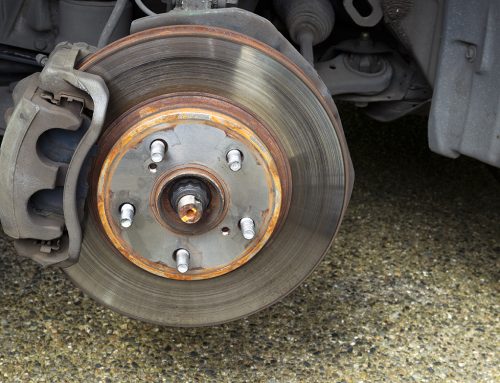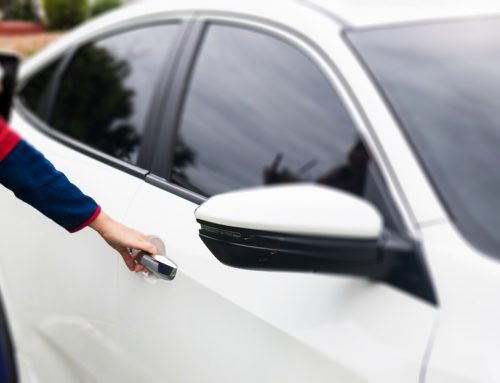Let’s face it, tires and rims are often overlooked as part of your vehicle cleaning routine, but recurrent cleanings are essential to maintaining the life and safety of your tires and rims.
A vehicle’s tires are constantly in contact with dirty, oily road surfaces. Rims, in the meantime, are splattered with this combination of contaminants and are collecting brake dust as well. Yet, when it comes to cleaning a vehicle, tires and rims rarely receive the same level of care and attention that most of us give the bodies of our cars.
But we’re going to make a case for putting a bit of extra effort into cleaning your tires and rims.
When they’re clean, it does more than just improve your vehicle’s looks. It also safeguards your tires from weathering and cracking and eliminates corrosion and shields your rims’ finish from the elements. Over time, dirt, oil, and brake dust can take their toll on your vehicle’s tires and rims. Tires become drab and cracked, and rims get grimy and scratched.
If these pollutants are not properly cleaned off, the damage they can cause will become much more noticeable over time. Routine cleaning of your tires and rims will help ensure these harmful substances are not given the opportunity to build up.
The good news is that most drivers can safely clean their tires and rims at home as long as they use care and the correct products.
For the sake of keeping it as straightforward as possible, we’re going to first chat about cleaning your tires, then follow up with some tips on how best to keep your rims looking their best. However, you may very well want to do both at the same time.
Recommendation: If you are planning on also cleaning the main body of your vehicle, make sure to do so AFTER you’ve cleaned your tires and rims. This will prevent any grime or over-spray dirtying the panels that you’ve already washed.
Recommendation 2: You do not want to clean your tires and rims while the surface is hot or in direct sunlight. If the surface is hot, there is an increased risk of the wheel cleaner drying on the surface before you’re able to rinse it off. Always ensure your tires and rims are cool to the touch and, if possible, you are in a shaded area before cleaning.
Cleaning and protecting your tires
Most of us think of cleaning our tires as only a matter of appearance, but in reality, it’s also a rather significant preventative maintenance step as we’ll described below.
In cleaning your tires, you must be sure to select the proper cleaning agent. Using the same product for both the tires and rims is best. It can loosen brake dust from the tiny holes found in the metal as well as the pores in the rubber. Simply look for a product that is labeled safe for all wheels. Be sure to avoid any product that lists formaldehyde or raw silicone as an ingredient, since these compounds can cause the tire rubber to deteriorate.
One common problem is brown tires that may occur because caustic degreasers were used for cleaning or there is the lack of a tire protectant. Tires contain rubber conditioners, antiozonants and UV absorbers in them to preserve the tire’s flexibility.
Using the incorrect cleaner can cause these important elements to leak out, leaving you with discoloration and cracking. If you don’t care for your tires properly, the rubber can break down. This is known as dry rot.
By avoiding dry rot and cracking, your tires will have a much longer life span.
You also need to choose a suitable brush to scrub the tire’s surface. Stiff nylon brushes are well-known in doing a good job of reaching into the nooks and crannies of the tire. Use your brush to completely scrub the tires with your cleaning product. Let the cleaning solution sit on the tire surface to help break up dirt and grime.
For tougher stains on your tires, such as tar, try using a wet scouring pad to clean.
It’s important that when you’re cleaning your tires (and rims for that matter), that you complete the entire cleaning process on each wheel before moving on to the next. This is to prevent the cleaning solution from drying on the surface of the wheel, causing unsightly residue to be left behind. Rinse each tire with a strong force of water before continuing go the next one.
One more thing. When the tire is completely rinsed, dry it with a terry or microfiber cloth.
Fun fact: for the first 25 years of their existence, tires were white as a result of the zinc oxide added to the rubber for strength. Later, researchers were looking for more ways to increase durability. Carbon black, a waste product of the petroleum industry, added longevity, but changed the color to black.
Top it off with that tire protectant
Now that you have your tires looking their very best, you need to protect them with the proper products to help retain their like-new look. Apply a tire dressing after every cleaning for a deep black color and long-term protection.
Two types of tire dressings include tire foams and tire shines. Tire foams clean and shine, while tire shines bring a higher level of shine to clean vehicles.
Note: Do not apply dressings to tire treads as it can be dangerous when driving.
Warning: All tire dressings are not created equal. Avoid dressings that contain silicone. While they can give you tires a high gloss shine, they tend to turn brown. They can also cause the rubber to degrade faster. Look for water-based dressings which are not as shiny but will not damage the tire.
You’re looking for a clean, black look, not an overly wet appearance.
Following these steps will get rid of those pesky contaminants and ensure your tires look shiny and new.
Fun fact: The largest manufacturer of tires in the world? Lego! The toy company produces 306 million of the little tires every year.
Now, let’s tackle those rims.
A gleaming set of wheels can make an ordinary used car look like new. And with just a little time and the right cleaning techniques, you can take your rims to the next level.
Because they represent a substantial investment and significantly boost your vehicle’s appearance, it’s important to take care of your car rims. One of the more important things you can do is to keep the rims free from grease, mud and road salt.
Moreover, brake dust (as we’ve discussed in a previous blog), a sticky substance caused by the friction when you apply the brakes, is highly corrosive and can cause permanent damage when left on metal rims for too long a period. Just another reason why cleaning your rims regularly is so important.
While you can often take care of these problems at the local car wash, many car enthusiasts devote a little additional time on the wheels to make sure they get the dirt out of the many crevices.
Use a toothbrush? You’re kidding, right?
It might seem a bit extreme, but if you really want to clean your rims, a toothbrush can offer a huge advantage. Just think about it. A soft toothbrush is gentle enough to escape scratching the rims, but it’s also maneuverable enough to get into all the nooks and crannies in the ornamental work.
First, you need to wash the rims with soap and water. Use a large soft sponge, or a brush with soft bristles, to get most of the grime off the rims. Make sure to use plenty of water. You might want to have one bucket to use with the cleaner and a second for rinsing your sponge and/or brush between uses. This way, you won’t transfer dirt from the water back onto the rims.
The trick is to actually pay attention to the rims and not glancing over the area.
Also, make sure you’re working with rims that are cool to the touch and, just like the tires, clean the rims one at a time for best results. Always work from the top of the rim to the bottom, just as you do when washing windows. This way, dirt and water won’t run over a freshly cleaned surface.
Please don’t rush. Give the cleaner time to work properly. Depending on the type cleaner, leave it on the wheel for a minute or so and let it get rid of the dirt. To be sure, read the directions for “dwell time” or the suggested amount of time needed for the product to be effective.
Now’s the time to break out the toothbrush. Make sure it’s brand new and look for a model labeled “soft” or “extra soft.”
Dip the toothbrush in a soapy water solution and angle it to get the grease and dirt off your wheels. When done, rinse the rim thoroughly, then dry with a soft, clean towel to prevent water spots.
Recommendation 3: Never use the same towel on the rims as you would on your paint. Brake dust consists of extremely hard and jagged particles that would easily scratch your vehicle’s paint if mistakenly used on your clear coat.
What about those spray cleaners made especially for rims?
Most auto parts sores and accessory shops sell spray cleaners made especially for cleaning car rims.
There are plenty of wheel cleaners to choose from and it’s not a one-size-fits-all approach. It’s important to choose one that is compatible with the type of wheels on your vehicle. Also, be sure to check out reviews to find out which ones work best.
Follow the instructions on the bottle, which usually tell you to spray the cleaner on the rims, allow it to soak in for a minute or two, and then spray it off with pressurized water.
It’s a good idea to use a lint free towel to dry off the rims once you’re done.
Wax on, wax off.
Finally, rub on a wheel wax jelly to guard the rims against intense brake dust and to help make the cleaning procedure easier the next time. Rub the jelly into your gloves, then massage it into the face, lip and spokes of the rim. Allow 3 minutes to cure, then remove with a clean, dry microfiber towel.
Properly cleaning your rims is just as important as polishing your paint, especially as wheels have become even more critical to the style and performance of today’s vehicles.
Note: You might even want to consider removing the wheels once a year to clean both the back and the front.
What about auto detailing clay?
If your rims still have a rough feel after they are cleaned, they might have embedded surface contamination. Auto detailing clay is designed to remove these contaminants, such as brake dust and other debris when complete, you should have super smooth rims.
Considering Professional Rim Refinishing and Cleaning as an alternative?
If you’re serious-minded about your rim cleanliness, let experts at Doubletake Auto take care of the work for you. Rather than going out to your driveway with a bucket and cloth, every so often, you may want to take your wheels to a detail shop with professionals ready to polish, refinish and protect your wheels.
Simply contact the tire and rim experts at Doubletake Auto.






